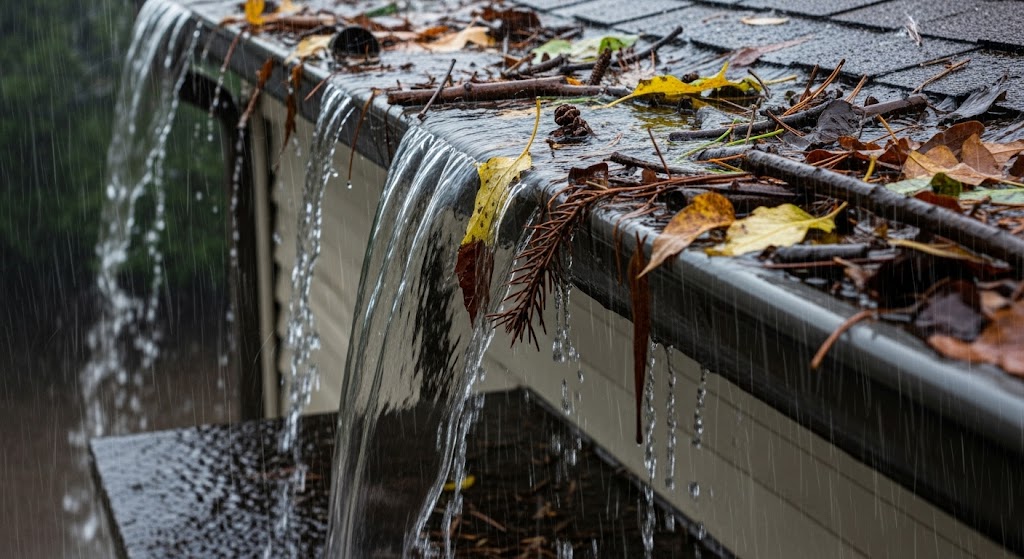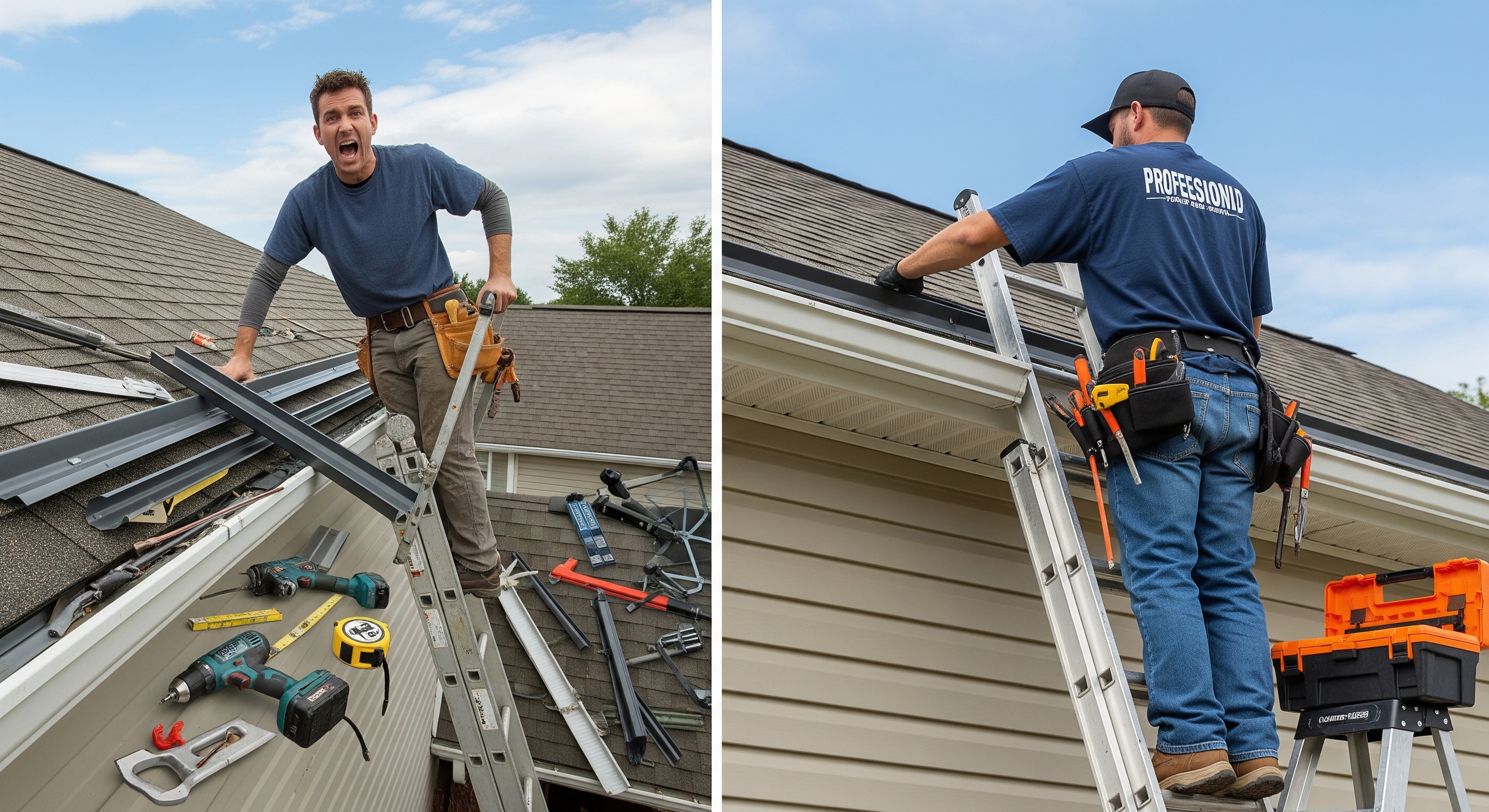
How Often Should You Clean Gutter Guards? Seasonal Checklist & Pro Hacks

Gutter guards protect roofs by keeping debris out of your drainage system, yet they still need regular attention. Ignoring maintenance can lead to clogged screens, water overflow, and damage to fascia and foundations. A well-planned clean gutter guards schedule helps homeowners prevent costly repairs and preserve curb appeal. This guide covers optimal cleaning frequencies, a seasonal checklist, and professional “pro hacks” to simplify upkeep.
Cleaning gutter guards involves more than debris removal; it ensures peak performance of rain-channeling systems. Seasonal shifts bring varying challenges, from spring pollen to winter ice dams. Consistent maintenance reduces the risk of overflow, mold growth, and pest nesting. For a full understanding of guard performance and maintenance needs by type, see our guide to the different types of gutter guards essential reading for any homeowner focused on efficiency and long-term protection.
Why Regular Gutter Guard Maintenance Matters
Even the highest-quality guards can collect fine particles like shingle granules, seeds, and pine needles. When these accumulate, water can bypass the covers and spill over your gutters. Left unchecked, this overflow may damage siding, erode landscaping, or create basement leaks.
Routine cleaning preserves the lifespan of both guards and gutters. Debris accumulation accelerates corrosion on metal components and wears out mesh faster. Following a reliable gutter guard upkeep routine prevents deterioration and ensures smooth water flow year-round.
Cleaning also offers an opportunity to inspect for damage. Loose brackets, gaps between panels, or bent screens can all compromise gutter guard performance. Catching these issues early can save hundreds in repair costs by avoiding extended water damage.
Finally, regular maintenance enhances home safety. Clogged gutters invite mosquitos, rodents, and mold—health hazards you don’t want near living spaces. Keeping guards clean discourages pests and promotes a healthier environment for your family.
Seasonal Cleaning Schedule
A bi-annual cleaning forms the backbone of most maintenance plans, but locations with heavy foliage or extreme weather may require quarterly attention. The table below outlines a recommended clean gutter guards schedule by season.
Spring Cleaning
Spring rains wash away winter grime, but leftover twigs and seeds can still clog guards. Homeowners should remove any debris that settled over the cold months, then flush with a garden hose to ensure clear channels.
When selecting the best gutter protection solutions, consider adding micro-mesh upgrades for finer filtration. These filters catch smaller particles like seed pods and granular roofing material, reducing the frequency of clogs during pollen season.
Summer Upkeep
By midsummer, pollen and small leaves often adhere to guard surfaces. A quick rinse or gentle brushing every July prevents buildup. It’s also an ideal time to check for warping caused by intense heat or direct sun exposure.
Inspect downspout entries and exits to confirm water flows freely away from the foundation. Redirect splash-blocks or extend downspout extensions if you notice pooling around the base of your home.
Fall Maintenance
Fall is the heaviest season for debris. Regular scooping of leaves and acorns from atop the guards prevents clogs at the downspout inlet. Tighten any loose panels and replace worn fasteners to avoid gaps that let in leaves.
Consider adding a gutter guard sealant or edge trim to block tiny debris from sneaking under the cover. This simple upgrade can slash cleaning time by up to 50 percent in leafy neighborhoods.
Winter Checks
While ice dams typically form on the roof, packed snow can rest on gutter covers. Use a rubber roof rake or broom to knock off heavy accumulations and prevent damage. Look for signs of ice bridging—solid sheets that block water passage once melting begins.
If recurring ice dams are a problem, consult Benefits of Professional Gutter Guard Installation to explore heated cables or specialized guard profiles that deflect snow and ice away from channels.
Pro Hacks for Efficient Gutter Guard Upkeep
Maintaining guards need not be a full-day chore. Adopt these expert shortcuts and tools to optimize your routine:
Micro-mesh liners are ultra-fine screens that fit under existing guards. They stop even the smallest particles while letting water through easily. This upgrade can cut cleaning visits from twice per year to once, especially in high-debris areas.
A telescoping brush designed for gutter work lets you sweep debris off guards safely from the ground. These angled heads reach up to 20 feet, reducing ladder time and risk. Look for models with nylon bristles that won’t scratch anodized finishes.
Splash-blocks at downspout exits redirect water flow and prevent soil erosion around your foundation. Durable plastic or stone variants can also catch escaping debris, making it easier to spot when downspouts need flushing.
DIY vs. Professional Maintenance
Cleaning gutter guards yourself offers upfront savings, but professionals bring expertise and efficiency. DIYers should observe these precautions:
- Ensure ladder stability and always wear gloves and eye protection.
- Avoid leaning ladders against gutter edges; use proper stabilizers.
- Work on clear days to reduce slip risks from wet surfaces.
Conversely, hiring a certified team ensures:
- Efficient cleaning with commercial-grade vacuums and pressure washers.
- Inspection for hidden damage—loose brackets, rust spots, seal failures.
- Liability coverage and warranty protection on repairs.
For homeowners seeking peace of mind, home defender USA offers comprehensive plans that include semi-annual cleanings, seasonal inspections, and free repairs on guard components.
Tools & Products for Optimal Upkeep
Equipping yourself with the right gear transforms a tedious chore into a simple task. Essential items include:
- Sturdy, extendable ladder with stabilizing feet.
- Telescoping gutter-cleaning brush or rubber-tipped roof rake.
- Garden hose with adjustable nozzle for flushing debris.
- Soft-bristle hand brush for detailed spots.
- Protective gloves, goggles, and non-slip footwear.
For tougher jobs, a wet/dry shop vacuum with gutter-cleaning attachments can suck debris through flexible hoses without climbing. Consider investing in gutter-seal silicone to fix minor leaks or gaps discovered during cleaning.
Monitoring Warning Signs
Staying vigilant between scheduled cleanings helps spot issues early:
- Water spilling over edges even during light rain.
- Sagging gutter guards or detached sections.
- Vegetation growing around guard seams.
- Stains on siding below the gutter line.
Address these indicators promptly to avoid accelerated damage. If you notice recurring problems despite regular upkeep, it may be time to explore new guard designs or professional retrofits.
Conclusion
A structured clean gutter guards schedule safeguards your home against water intrusion, pest infestations, and structural decay. By following seasonal checklists, leveraging pro hacks, and choosing the right tools, maintenance becomes both efficient and effective. Whether tackling tasks yourself or enlisting experts, prioritizing gutter guard upkeep extends product life, enhances curb appeal, and provides unparalleled water management year-round.
For homeowners ready to elevate their protection, reach out via Contact us to learn how Home Defender USA can handle all aspects of guard installation, inspection, and maintenance—so you never have to sweat the small stuff again.
FAQs
How often should I clean gutter guards in areas with heavy maple tree coverage?
In zones with dense maple foliage, quarterly cleanings—spring, summer, fall, and post-leaf drop—are recommended to prevent clogs.
Can micro-mesh liners eliminate all debris buildup?
While micro-mesh blocks most particles, occasional rinsing is still necessary to clear pollen and shingle grit.
Is it safe to power-wash gutter guards?
Low-pressure rinsing is acceptable, but avoid high-pressure streams that could dislodge screens or seam seals.
What’s the ideal tool for snow removal on guards?
A rubber-tipped roof rake with an extended handle effectively clears snow without scratching guard surfaces.
Do warranty plans cover seasonal inspections?
Yes—most maintenance agreements include bi-annual inspections and minor repairs under














.jpg)











